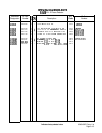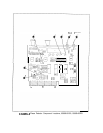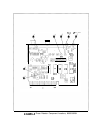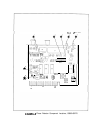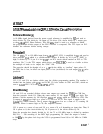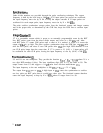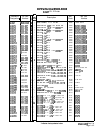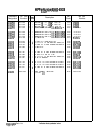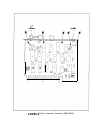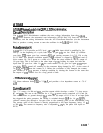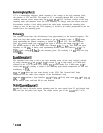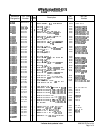
Synchronizer
0
Other divide numbers are provided through the pulse swallowing technique. The output
frequency is held by the lock loop to 500 kHz. If N input pulses per second are swallowed,
the input frequency must rise by N Hz to keep the output constant. If N input pulses are
swallowed for each output pulse, input frequency must rise by N x 500 kHz.
The pulse swallow synchronizer accepts pulses from the fractional counter and integer counter,
and at the proper time, as determined by the CLK line, drops the PSW line to swallow input
pulses.
Integer
Counter
@
U7 is a presettable counter which is preset to an externally programmable count by the RST
line. RST pulses come from the direct divide output, and occur at a 500 kHz rate. After
each RST pulse, U7 counts CLK pulses until a count of 9 is reached. A count of 9 causes the
output of U9A to go high. The pulse swallow synchronizer drops the PSW line on CLK pulse
after the RST pulse, and raises it two CLK pulses after U9A goes high. PSW therefore is low
one CLK pulse longer than the count time. If U7 is preset to N, (9-N) + 1 input pulses will
be swallowed for each CLK pulse, forcing the input frequency to rise by (10-N) x 500 kHz.
Fractional
Counter
@
U5 and U6 are rate multipliers. They provide the function
FOUT
=
FIN
x
N/100
where N is a
two digit BCD number (8 bits). The least significant digit goes to U5, the other to U6. The
output comes from U5 and triggers a 1.6 ps pulse from one-shot multivibrator
Ull.
The input frequency to the rate multipliers is 500 kHz, so
FOUT
= N x 5 kHz.
The output from
Ull
goes to U2A. A high input at U2A causes the synchronizer to swallow
one less pulse per RST pulse than it would have other wise. The fractional counter therefore
causes the input frequency to drop by N x 5 kHz, where N ranges from 0 to 99.
2
AlQA7



